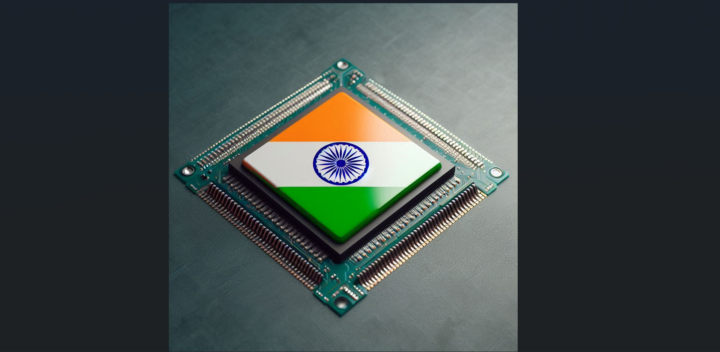In the face of FinTech adaption, developments and forecasts in the sector will bring about some tectonic shifts in the near future, resulting in a cascading effect of further growth, innovations, and partnerships.
Indian FinTech is buzzing as Paytm’s parent One97 Communications is all set to come out with its initial public offering (IPO) November 8 with the price band fixed at INR 2,080-2,150 per share, indicating a valuation of about INR 1.48 lakh crore.
Read more: Challenges facing FinTech in reaching out to the rural Indian
This quarter, Indian FinTech has been raking in moolah with big deals. In August, UnionBank of the Philippines chose Infosys’ Finacle digital banking solution suite for its cloud, while in September, Frost Bank selected the company to launch new mortgage loan product offering.
In September, Wipro and Tennessee-based First Horizon Bank (FHN) partnered to transform the core banking channels and servicing capabilities of VirtualBank, an established digital bank that FHN inherited from Louisiana-based IBERIABANK as part of the merger completed in 2020. The combined entity’s assets are approximately US $87 billion.
Globally, UBS, the Swiss multinational investment bank and financial services company, posted its highest quarterly profit since 2015, as strong trading activity by the world’s super rich led to a 23% surge in fee income.
All this progress in business indicates that people are migrating towards adapting digital finance. And this will lead to expansion by FinTech branching out in unprecedented ways in the future.
All this progress in business indicates that people are migrating towards adapting digital finance. And this will lead to expansion by FinTech branching out in unprecedented ways in the future
For example, a recent Juniper Research study has predicted that the value of global payment transactions facilitated by open banking will exceed US $116 billion in 2026, from just under US $4 billion in 2021.
This growth rate of over 2,800% over the next five years is projected to be driven by rising user awareness of open banking features, backed by more deployment within Europe, as vendors build on PSD2 (Second Payment Services Directive) APIs to deliver expanding services.
Another study in September forecasted that the global transaction value of digital bill payment and presentment will exceed US $2 trillion by the end of 2021, from US $1.9 trillion in 2020.
This kind of progress will bring about some tectonic shifts in the world of FinTech in the near future, as new progress and adaption in the sector result in a cascading effect
In fact, as consumers prefer mobile banking apps, smartphones will account for 51% of all digital bill payments in 2021, increasing to nearly 57% in 2026.
This growth, which will oust online management via browsers, indicates the rising maturity of the market, which is currently striving for new user adoption.
This kind of progress will bring about some tectonic shifts in the world of FinTech in the near future, as new progress and adaption in the sector result in a cascading effect. Let’s find out how.
Cascade 1: Open Banking Payments Will Threaten Cards
As cause and effect play out in FinTech, predictions lead to future conclusions. For instance, open banking payments, where payments are made directly from bank accounts, will become a threat to the current dominance of cards in the ecommerce sector.
Currently, cards are the kings in ecommerce payments, but as permissioned access increases on account of its secure nature because of strict KYC (Know Your Customer) rules, open banking will move ahead
Currently, cards are the kings in ecommerce payments, but as permissioned access increases on account of its secure nature because of strict KYC (Know Your Customer) rules, open banking will move ahead.
The recommendation for payment providers is to join hands with open banking API providers now to avoid risks of too many intermediaries.
Cascade 2: B2B Payment Automation Will Push Cards & Instant Payments
Another area witnessing a shift as digital takes hold is domestic payment methods. The need to automate B2B payments at scale is leading to a fundamental shift in the way payments are made.
The volume of both B2B domestic payments are predicted to fall globally between 2021 and 2023, as automation in payments will make the industry lean towards cards and instant payments.
The pandemic has accelerated the transition away from traditional payment types, with growth focused on instant payments and card payments. This transition will be important for automation, but will take some time, given the established nature of these processes
As the research author Nick Maynard explained: “The pandemic has accelerated the transition away from traditional payment types, with growth focused on instant payments and card payments. This transition will be important for automation, but will take some time, given the established nature of these processes.”
An instant payments scheme is any electronic retail payment system that is offered on a 24-hour basis with transactions managed in under 10 seconds.
The need to automate B2B payments at scale is leading to a fundamental shift in the way payments are made
In fact, by 2023, global instant payment transaction volumes in the B2B domestic channel are projected to grow by 56%, the fastest growing payment method.
This growth will be driven by the launch of instant payment schemes carrying additional remittance data, which can simplify the complex B2B payments ecosystem.
Cascade 3: Digital Bill Payments Via Mobile Phones Will Push Digital-Only Banks
The rise of digital bill payment via mobile phones will ensure that digital-only banks will steadily grow their offerings with the need to broaden their revenue streams. This in turn will lead to partnerships between digital billing services and digital-only banks, as they strive to access the best sources of future user growth.
As open banking unlocks API opportunities, banking apps become all pervasive. This in turn will take billing reach into broader markets, thus, spreading this ecosystem further.
Cascade 4: Geographical Unevenness Will Mould the Ecosystem
The uneven growth of FinTech adaption globally will also mould the ecosystem according to consumer needs.
For example, according to Juniper, PSD2 will lead Europe to dominate open banking payments with over 75% of users globally in 2026. The US is also an upcoming market for open banking and will see acquisitions and partnerships to fulfil the demand for payments players to develop new capabilities.
The uneven growth of FinTech adaption globally will also mould the ecosystem according to consumer needs
In fact, the US is set to become the single largest digital bill payment market in the next five years, accounting for some 35% of all digital bill payment transactions by value in 2021. As such, Europe and Asia Pacific can push up usage by partnering with bill payment vendors with the most extensive third-party connections.
COVID-19 Impact is Hampering Value Growth, Needs Automation
While FinTech adaption has gone up during the COVID-19 lockdowns, and many businesses are now returning to pre-pandemic levels, the longer-term economic consequences of the pandemic are still hampering value growth.
For example, a study in October predicted that the transaction value of B2B domestic payments across payment methods will exceed to US $54 trillion in 2023, up from US $49 trillion in 2021. Although this sounds good, it’s only a 10% growth.
To overcome this, payments automation will be a critical solution to reduce manual work and boost small business cashflow.
Read more: The pandemic has ensured that future of FinTech is contactless
As the forces of nature, as well as that of the market, amalgamate to shape the rich and complex ecosystem of digital finance, growth spurts will leap out from expected and unexpected corners.
All in all, in ten years, the FinTech landscape will become an even more complex and busy ecosystem than it is today, with automation and smartphones driving digital finance transactions.












